

Explore the history, culture, people and beautiful landscapes of Vietnam on the 63Stravel travel app
Download the 63stravel app

History has left in Con Dao today a system of prisons, watchtowers, vestiges of torture, lime kilns, along with more than 20,000 revolutionary soldiers who survive with life. with the atmosphere and the spirit of flowers and plants here.
Contrary to the names for Con Dao (belonging to Ba Ria Vung Tau) is "hell on earth", "indomitable symbol of revolutionary will", where "the number of dead is ten times more than the living". Con Dao is now a very peaceful and fresh tourist destination.
In addition to Hang Duong Cemetery with 4 zones A, B, C, D including many mass graves, graves of heroes and martyrs: Nguyen An Ninh, Vo Thi Sau, Cao Van Ngoc, Le Hong Phong, Le Van Viet... There is also Hang Keo Cemetery with no graves. History records the painful and heroic pages when the elite sons of the Vietnamese revolution were mixed in body and soul into the land and heaven of Con Dao - on the ocean side, they lay listening to the sea sing.
The graves formerly located in Hang Keo have gathered to Hang Duong. However, in the ground, there are still the blood and bones of the martyrs that dissolve into the anonymous and rest with the sound of the ocean waves at sea.
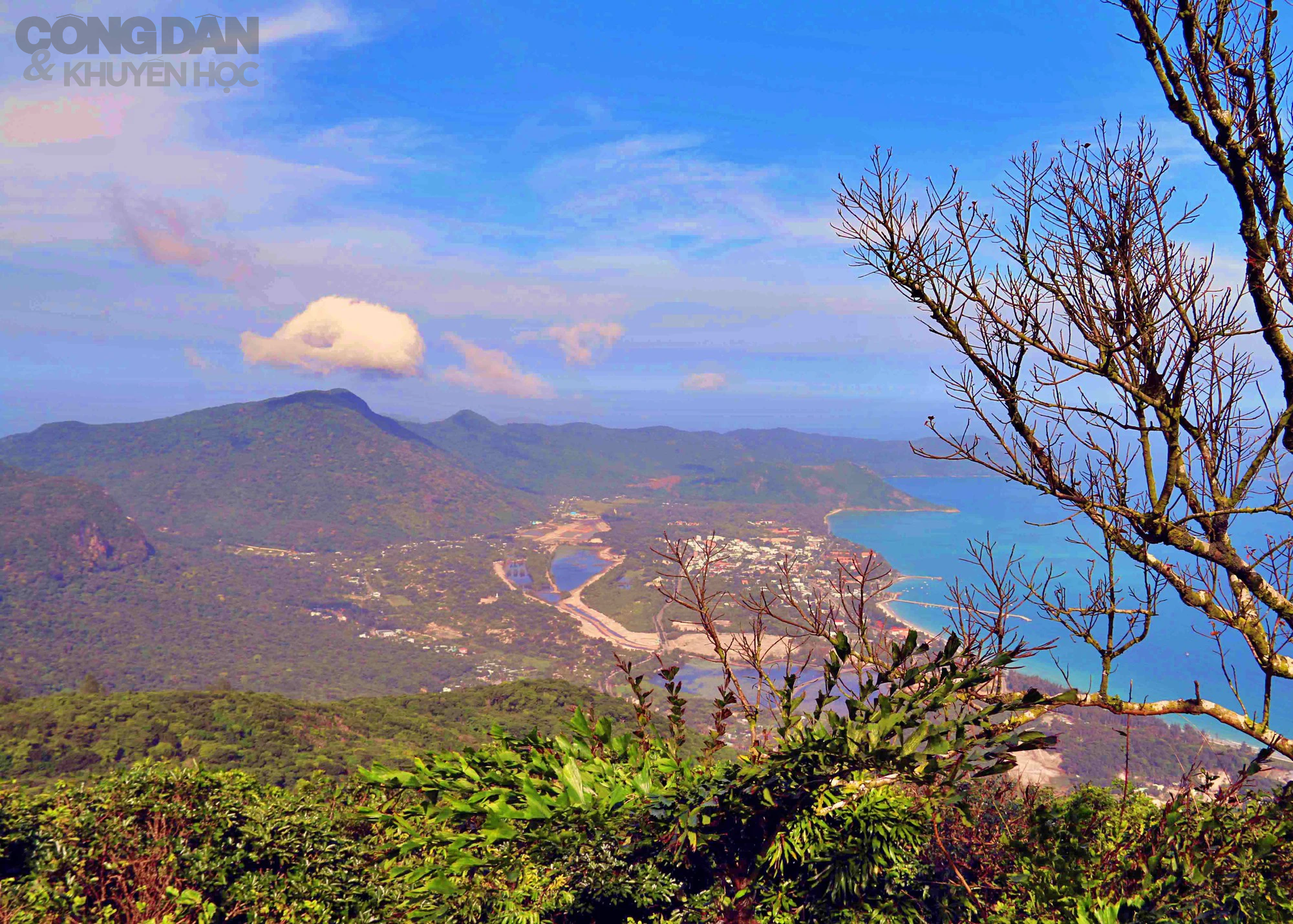
Panoramic view of Con Dao from above. Photo: TTH
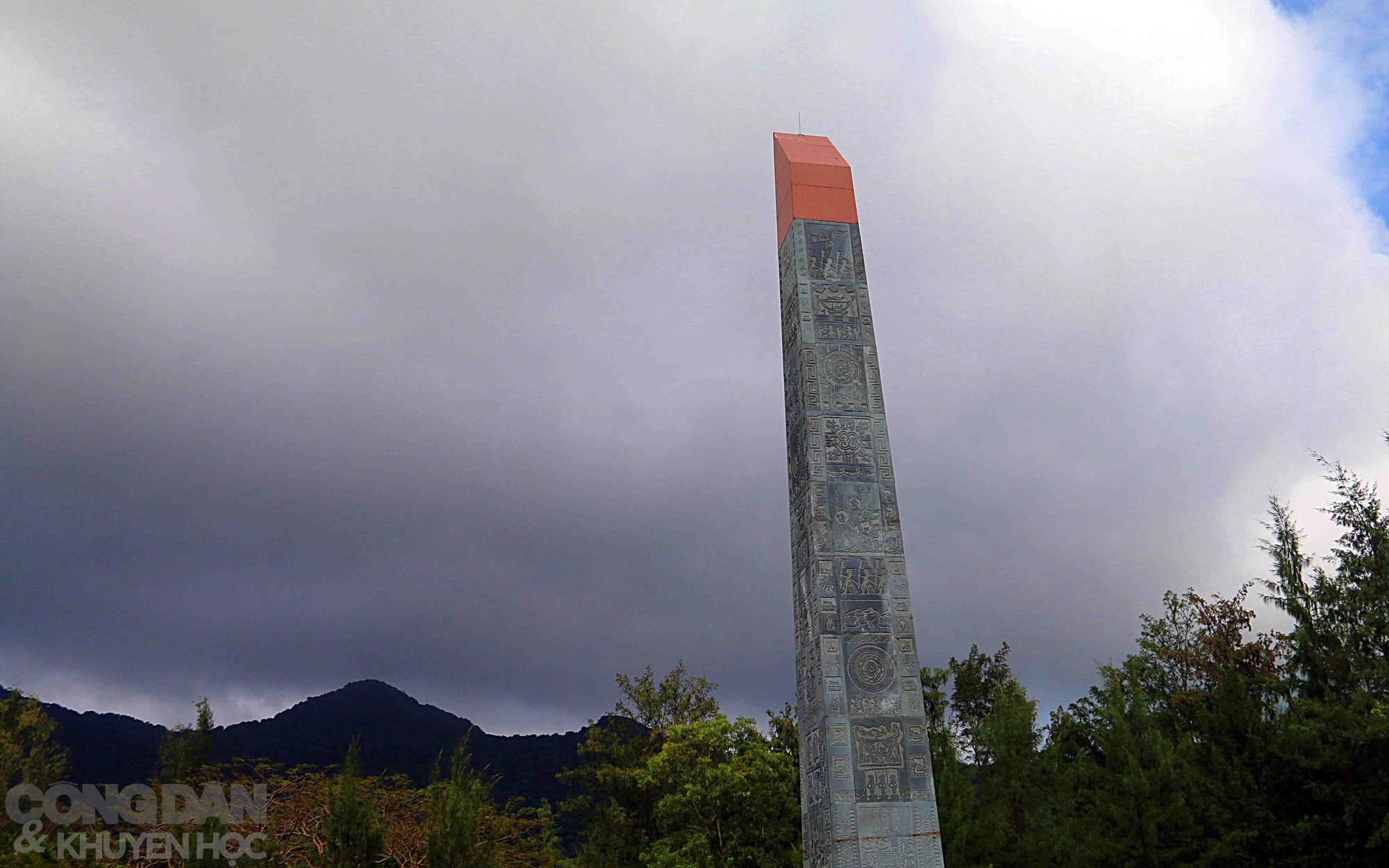
The central monument of Hang Duong Con Dao Cemetery - where fellow soldiers and soldiers across the country respectfully bow to commemorate the heroic spirits of the martyrs. Photo: TTH
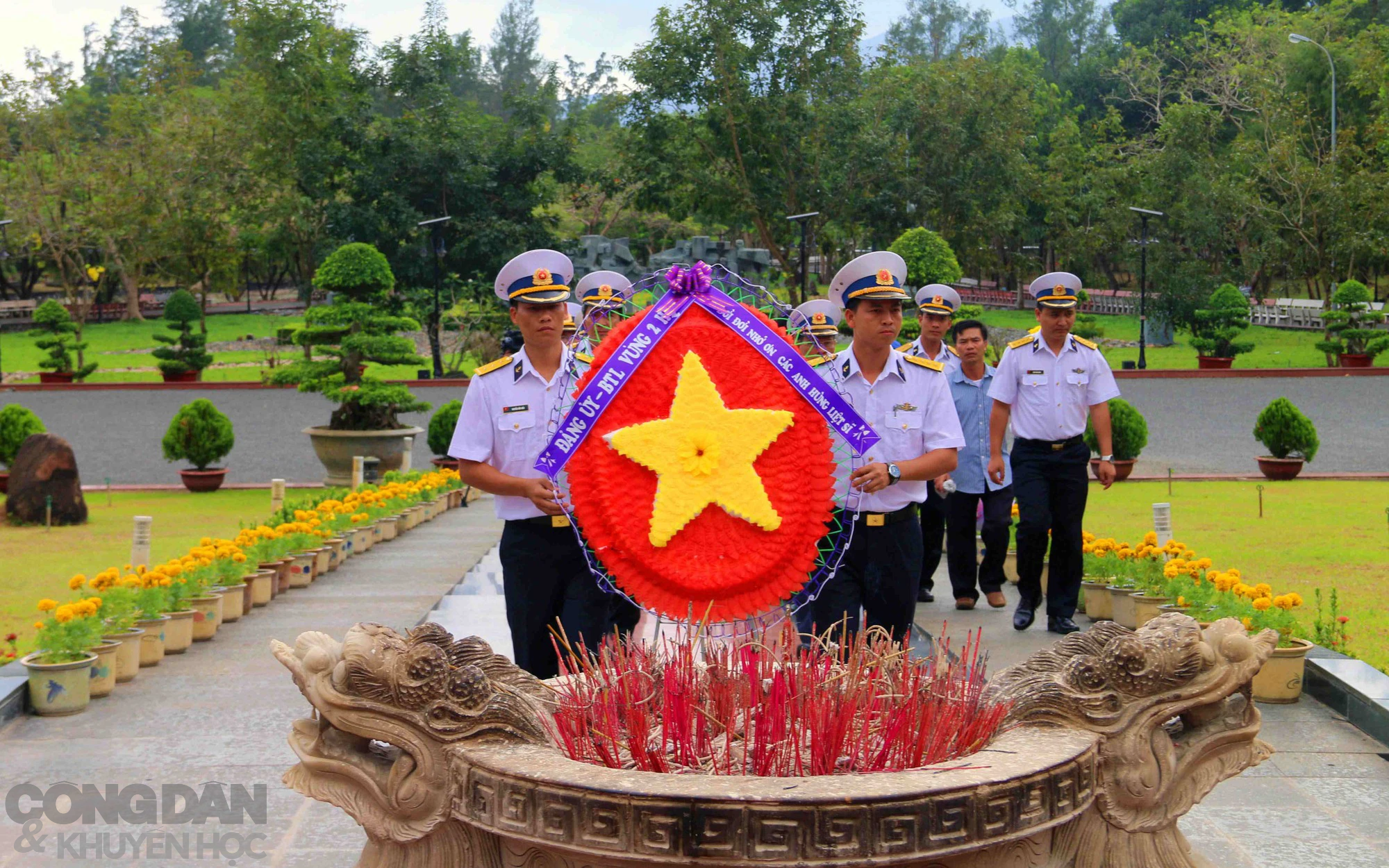
Vietnamese Navy forces pay tribute to heroic martyrs at Hang Duong Cemetery, Con Dao. Photo: TTH
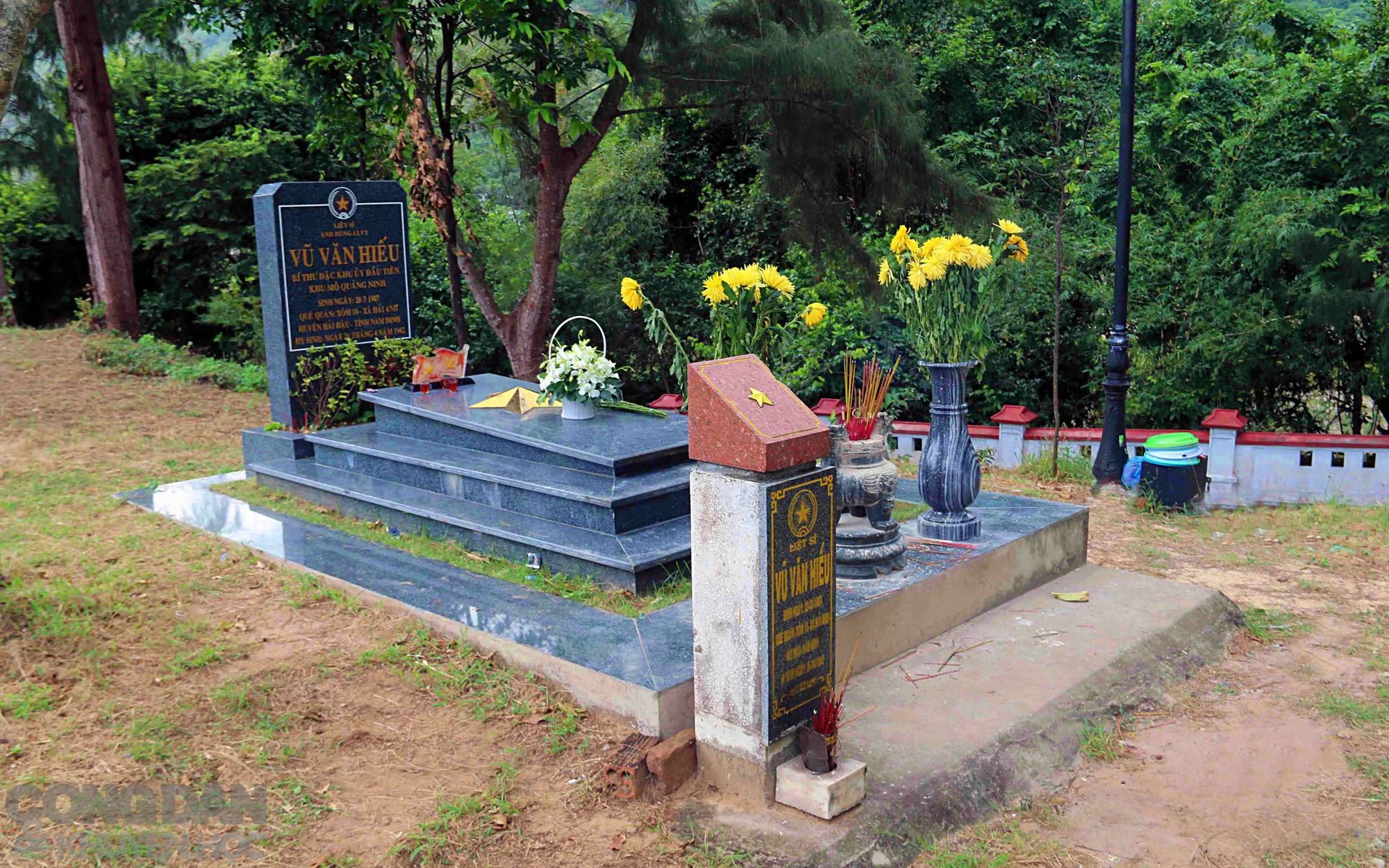
Tomb of revolutionary soldier Vu Van Hieu in Hang Duong Cemetery. Photo: TTH
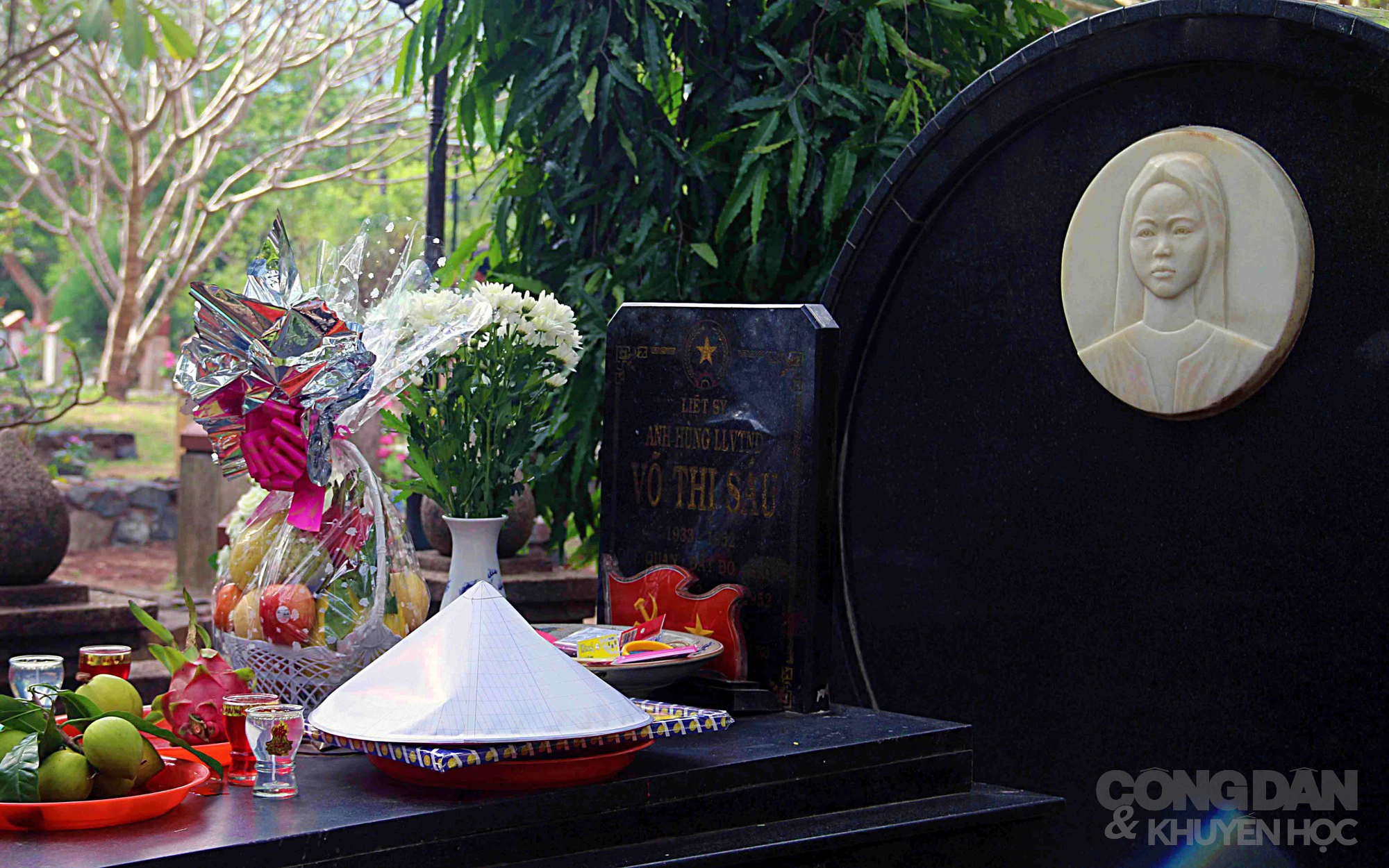
The grave of female Vo Thi Sau in Hang Duong Cemetery, Con Dao is always presented with conical hats and special leki-ma fruits from Dat Do's hometown of the heroine. Photo: TTH
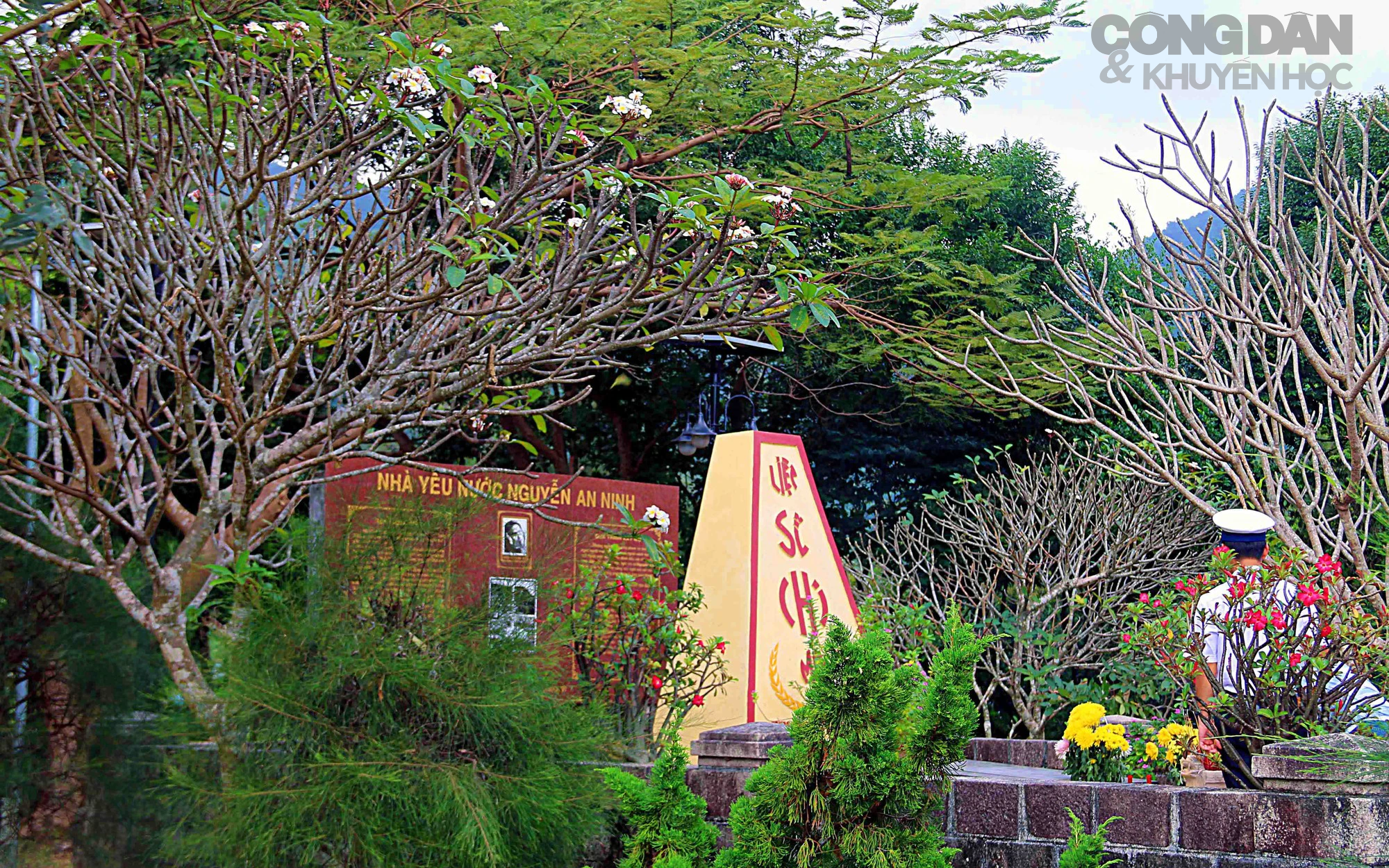
Tomb of patriot Nguyen An Ninh in Hang Duong Cemetery. Photo: TTH
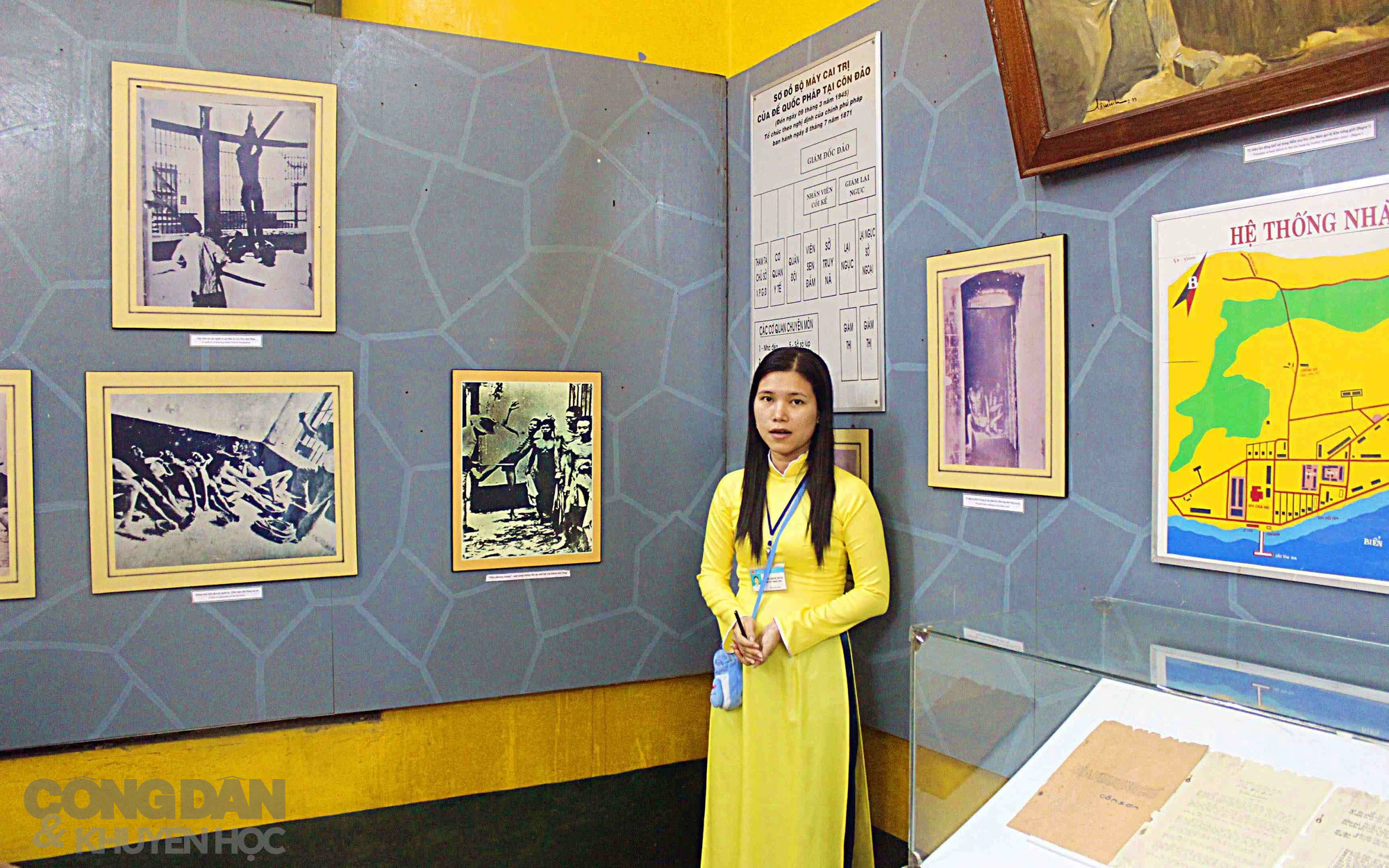
Con Dao Museum preserves war remnants for tourists to visit and learn about history. Photo: TTH
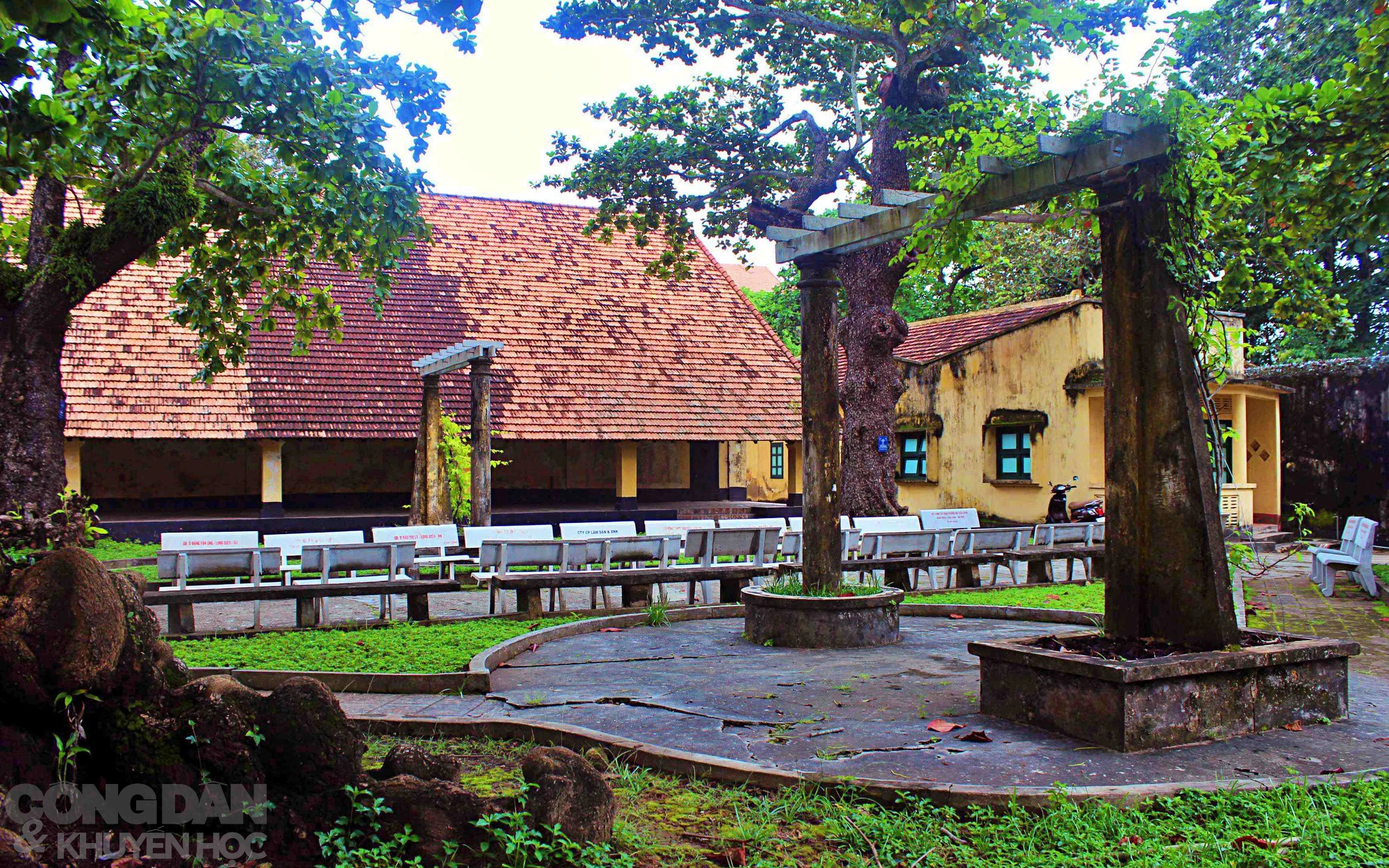
The prison system - the place where patriotic revolutionaries were detained during the war is now left in Con Dao. Photo: TTH
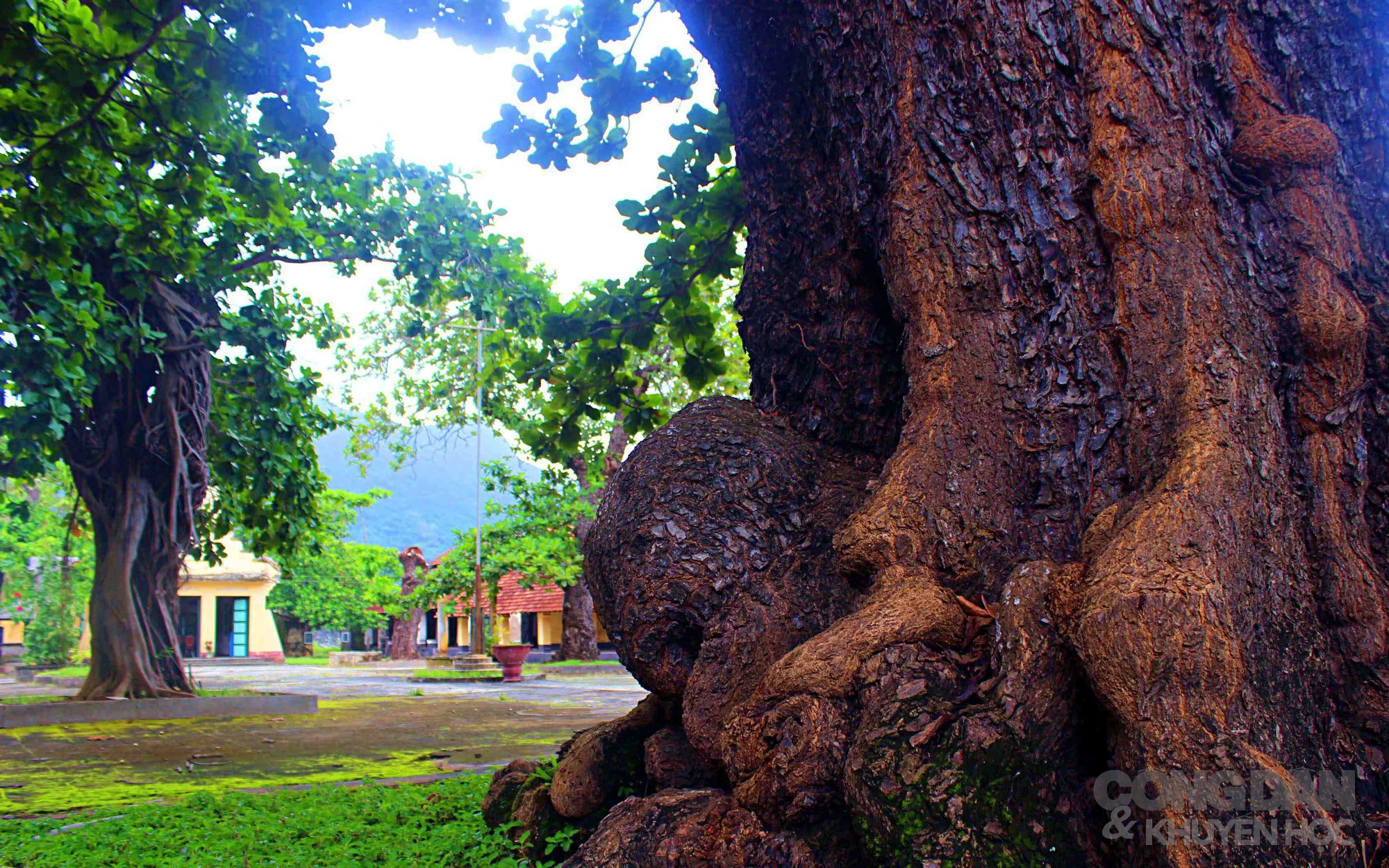
The ancient eagle trees - historical witness in Con Dao. Photo: TTH
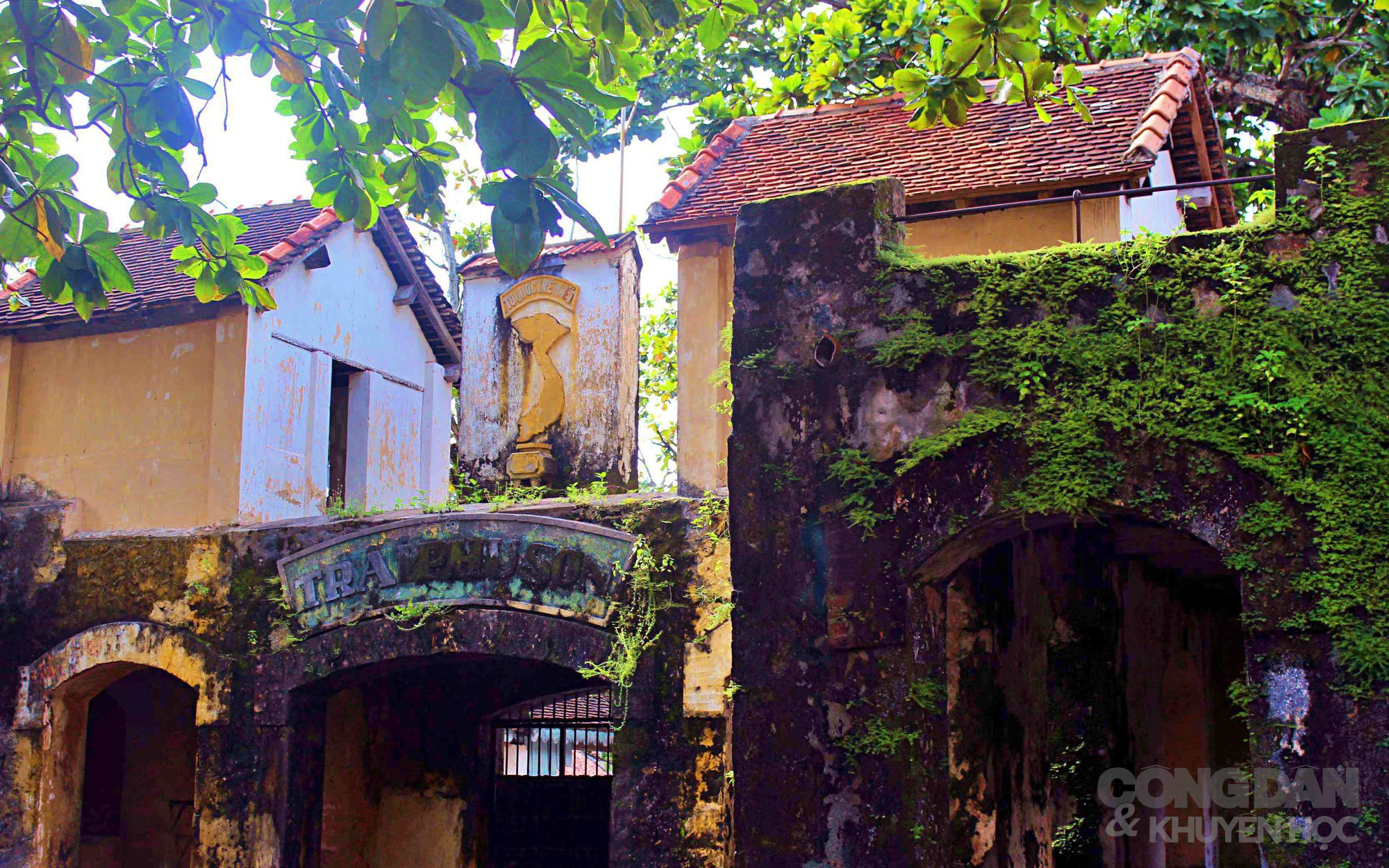
Relic of Phu Son prison in Con Dao. Photo: TTH
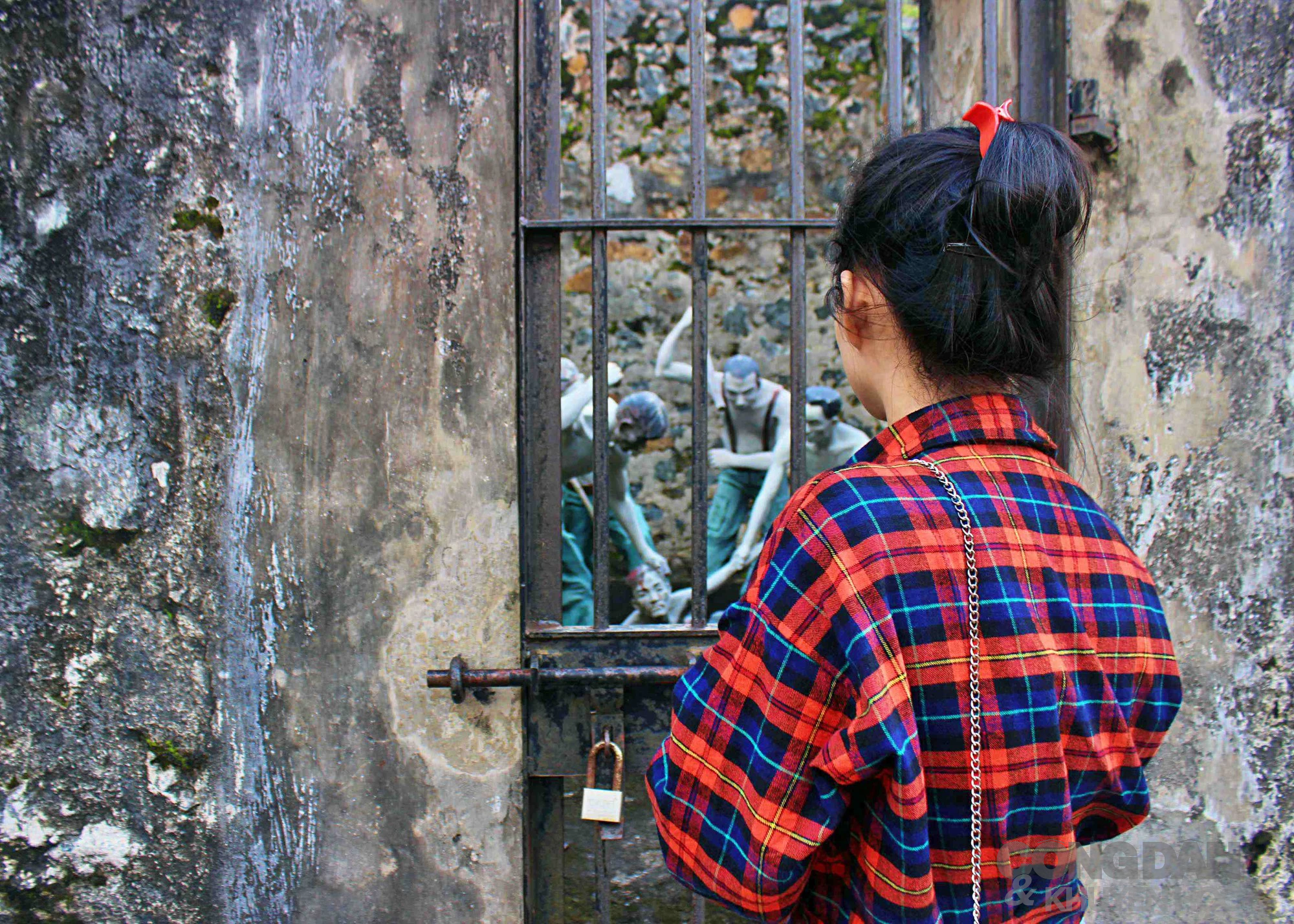
The young girl was shocked when visiting the ruins of Con Dao prison, deeply understanding the sacrifices of revolutionary soldiers for today's peace. Photo: TTH
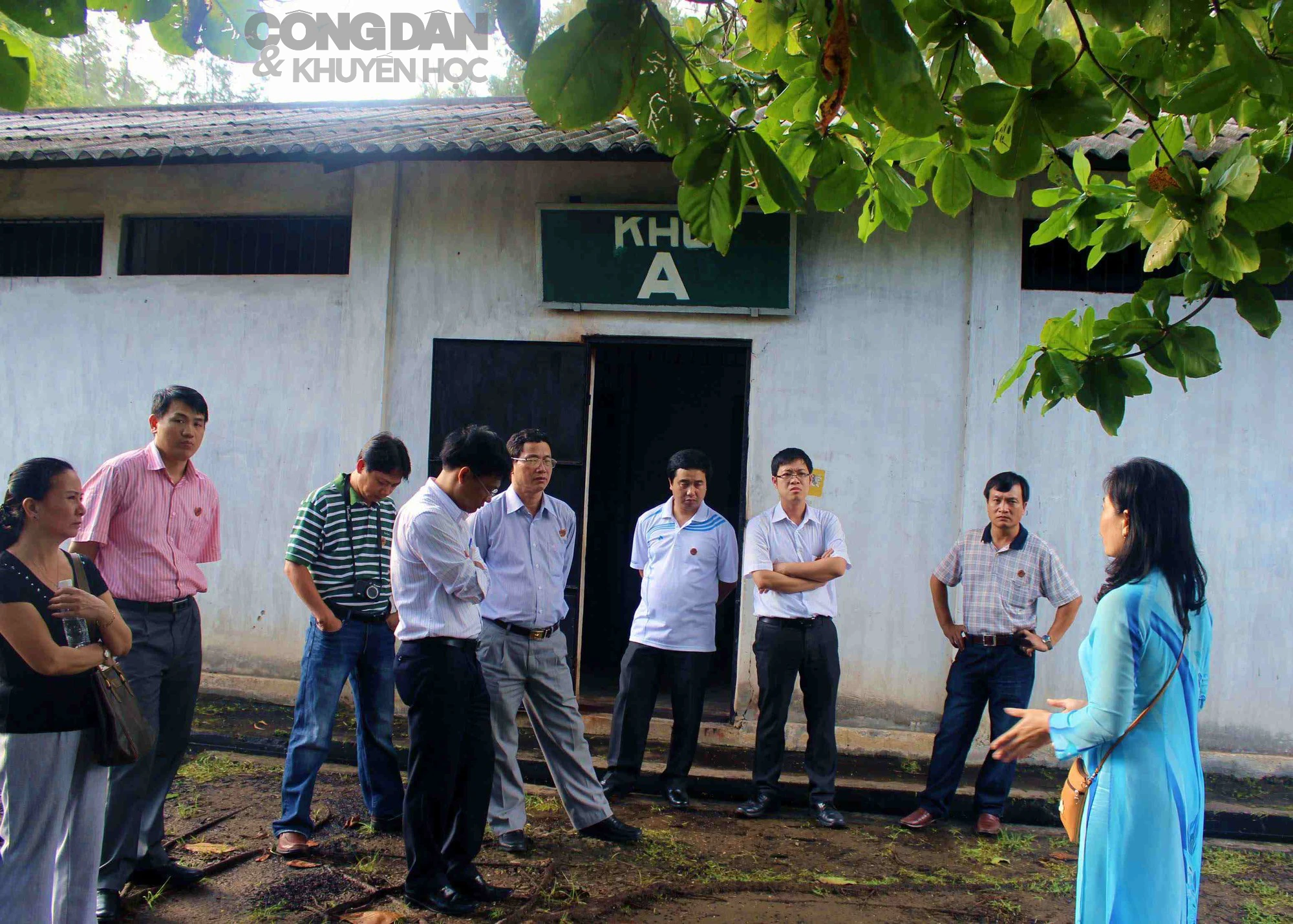
Every day, people from all over the country visit Con Dao prison relic, listen to tour guides tell historical stories. Photo: TTH
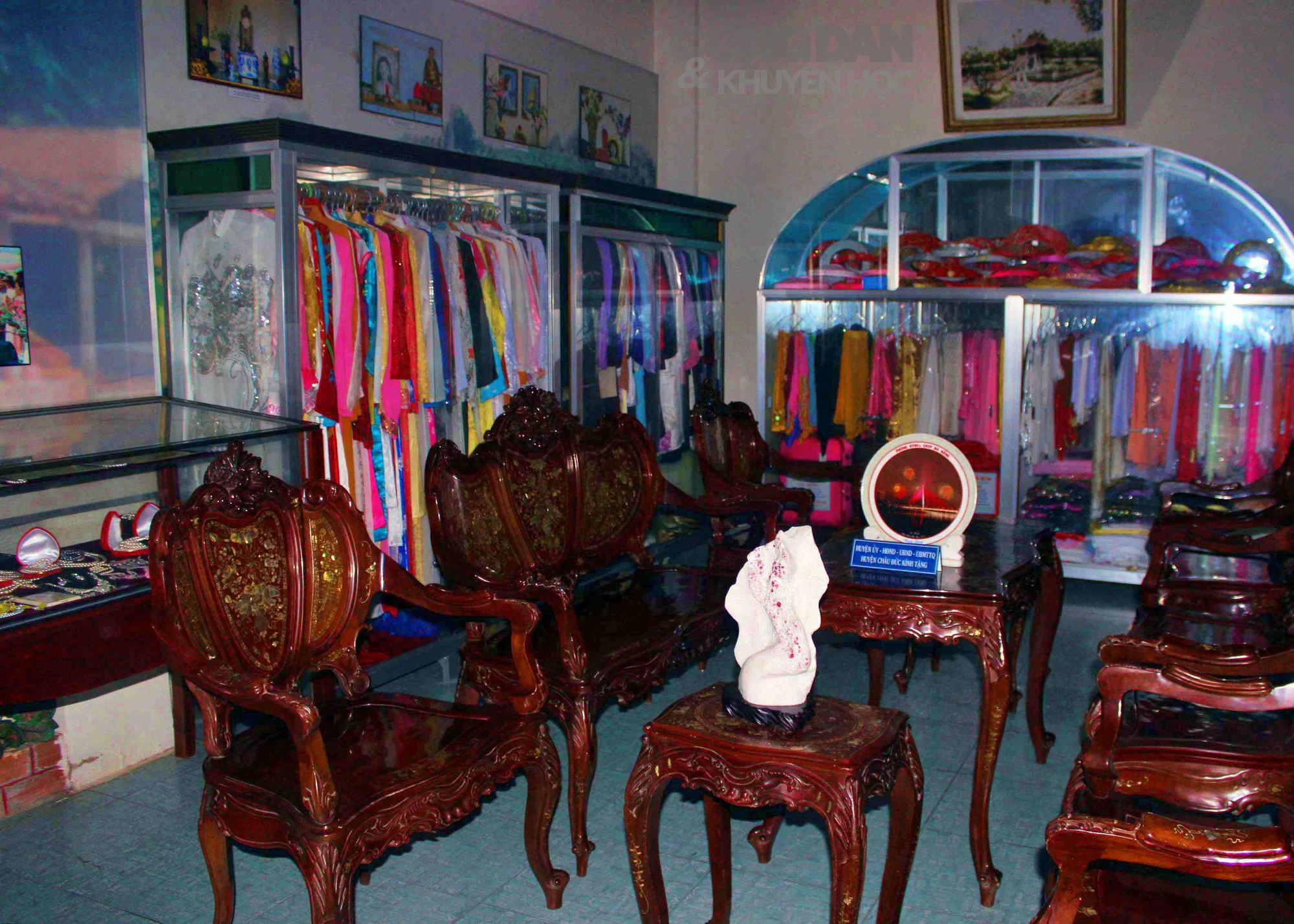
 Bảo tàng lưu giữ những kỉ vật áo dài, trâm cài tóc, gương lược... du khách khắp nơi mang đến viếng mộ Liệt nữ Võ Thị Sáu. Ảnh: TTH
Bảo tàng lưu giữ những kỉ vật áo dài, trâm cài tóc, gương lược... du khách khắp nơi mang đến viếng mộ Liệt nữ Võ Thị Sáu. Ảnh: TTH
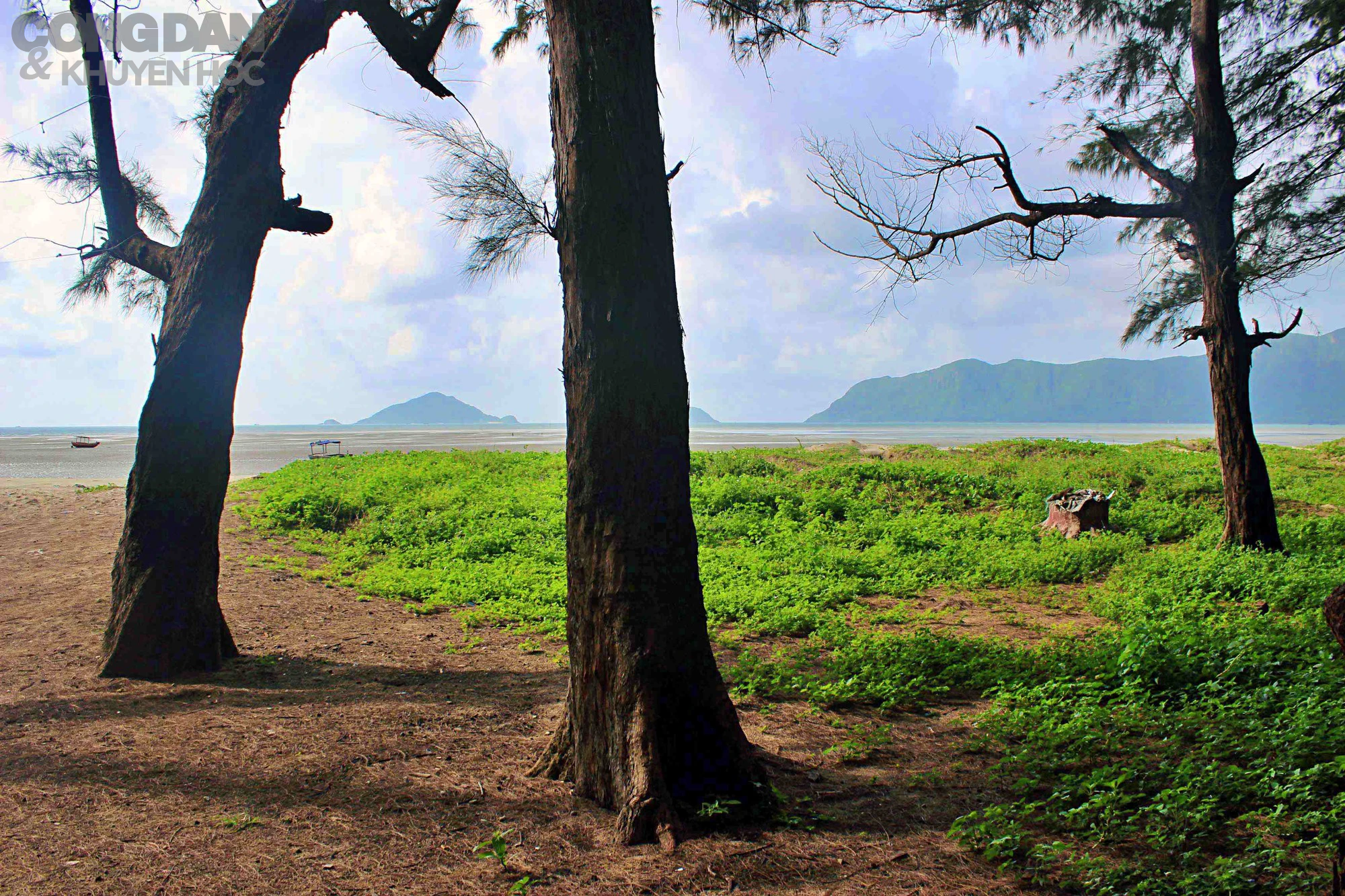
Hang Keo Cemetery soaked in heroic blood today is the peaceful Con Dao coast. Photo: TTH
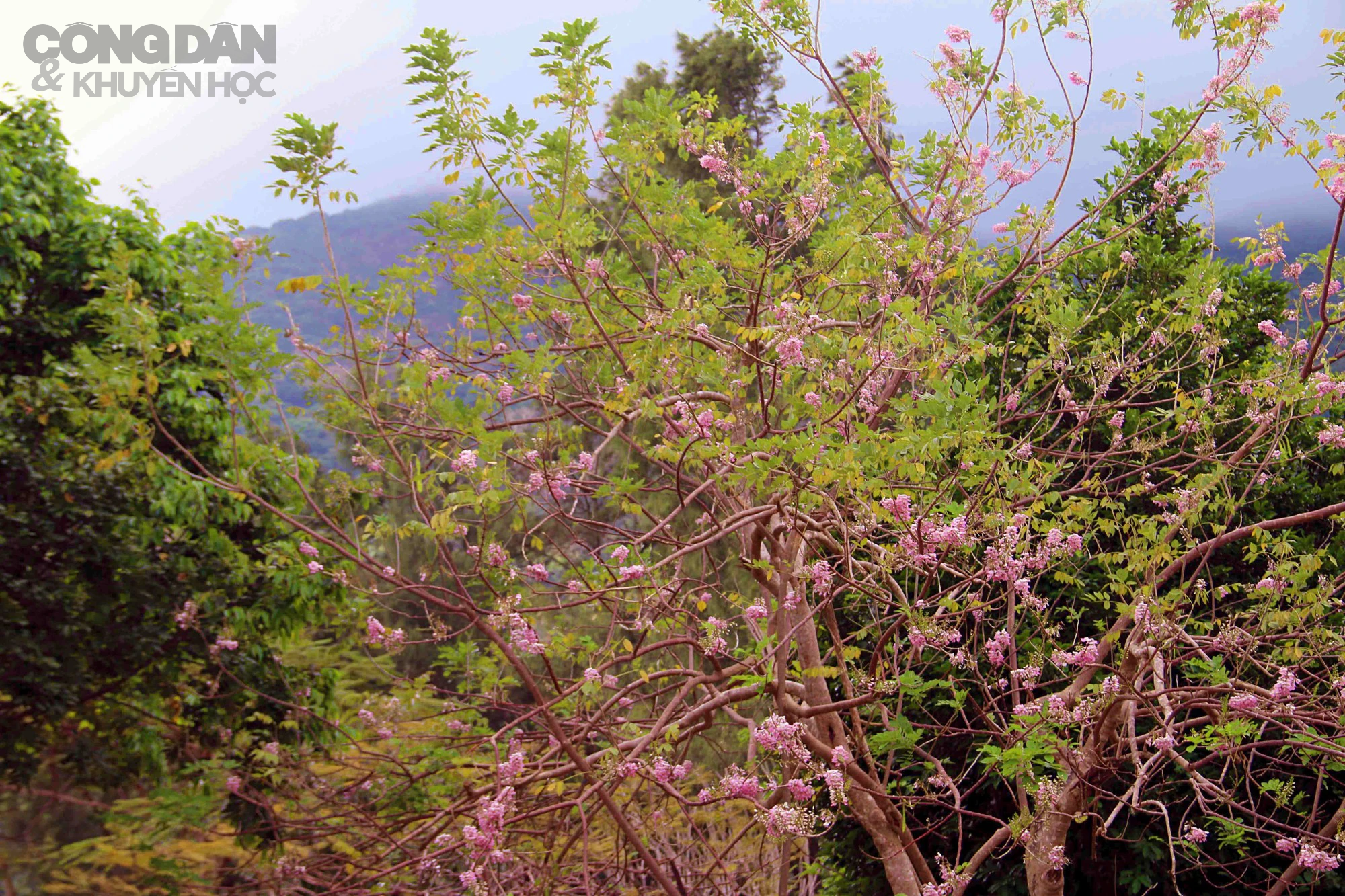
The season of apricot blossom - a typical flower of the sunny and windy land of Ba Ria Vung Tau in Hang Duong Cemetery. Photo: TTH
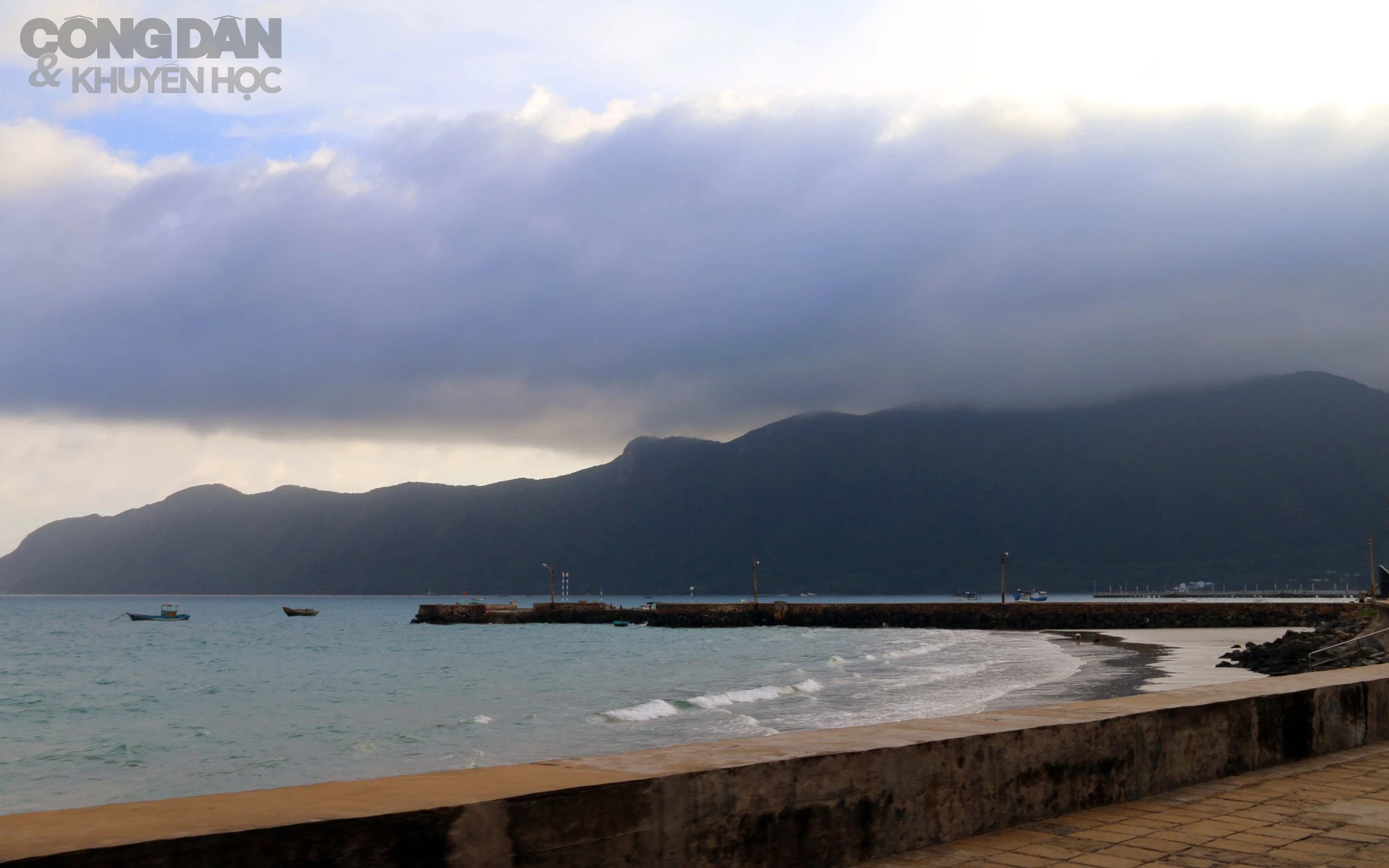
Pier 914 is a relic marking the sacrifices of 914 political prisoners who remain with time, listening to the sea sing. Photo: TTH
Ba Ria Vung Tau 1820 view
Update day : 02/08/2023
Con Dao - voted one of the most beautiful islands in Asia, one of the most beautiful empty beaches in the world - is currently becoming an attractive tourist destination for many domestic and international tourists. Pristine nature, mysterious spiritual stories, a heroic revolutionary history... inspire many visitors to come here. Con Dao is an archipelago off the coast of Ba Ria - Vung Tau province, far from City. Vung Tau 97 nautical miles. Because it is located in the middle of the sea, visitors to Con Dao will have the opportunity to explore beautiful beaches and bays. Some famous beaches and bays in Con Dao include: Dam Trau Beach, An Hai Beach, Lo Voi Beach, Dam Tre Bay, Con Son Bay,... Con Dao is associated with the resilient, heroic and tragic revolutionary history of our nation. Tourists who do not know what Con Dao has to offer can visit relics, landmarks and historical evidence such as: Dao Lord's Palace, Con Dao Museum, Historic Pier 914, Con Dao prison, etc. Con Dao seafood you should try to enjoy is Nang's breast snail, cone snail, giant ear snail, hand snail, red lobster, shrimp, red grouper, sun squid... and other types of sea fish. Takeaway specialties are widely sold at Con Dao market, including fresh and dried seafood and souvenirs. Tourists like almond seed jam and earthen ginseng wine the most. The taste of Con Dao ginseng is mildly sweet, pungent and fragrant, quite similar to Korean ginseng. Folks often use ground ginseng roots to soak in wine, stew chicken, and stew duck for nourishment...
Ba Ria Vung Tau 2124 view
From March to September
Hon Ba in Vung Tau is a small oasis in the middle of the sea with an area of about 5000m2. It is located quite close to the mainland so it is visited by many tourists. This is a very attractive spiritual tourist destination, on the island there is the famous sacred Ba Temple. In addition, visitors coming here can also admire the beautiful sea path connecting Hon Ba and the coast. In terms of location, Hon Ba is located in the Back Beach area of Vung Tau city, only about 200m from Nghinh Phong Cape and the foot of Nho Mountain. If you want to see the whole panorama of Ba Island, you can try climbing on the shoulder of the Christ statue, from here you will have a panoramic view of the entire scenery of this island. To facilitate the exploration of religious culture at Hon Ba and travel to Vung Tau, you should go on worship occasions such as January, April, July, and October of the lunar calendar each year. For tourists who want to combine a visit to Vung Tau, the period from May to October will be the best, at this time there is little rain and mild sunshine, making it extremely ideal for sightseeing. In the period from November to April, Vung Tau will have quite hot weather. Ba Hon Ba Vung Tau Temple is definitely the first place that many tourists will want to visit. The name Mieu Ba was born in the late 18th century. The temple was built to worship the Water Dragon God to pray for good weather and wind so that fishermen can feel secure when going fishing. Ba in the word Mieu Ba means Thuy Long Than is a female deity. In order for Ba Temple to be as spacious as it is today, the people of Thang Tam village have donated money many times to restore the temple. Ba Temple is also associated with an extremely sacred event. In 1939, a French officer, Archinard, ordered 3 cannon shots to be fired at Ba Temple. Only one hit out of 3 shots. Just a few days later, this officer lost his life at the temple due to careless use of a gun. This made the French army feel that Ba Temple was very sacred and no longer dared to destroy it. In addition to spiritual tourism at Ba Vung Tau island, you will also have the opportunity to admire the natural scenery here. There is a source of fresh air here so the vegetation is very developed with the green colors of poplar trees, coconut trees, areca nuts and plumeria flowers. This place is also one of the few places untouched by human hands, the landscape still retains its natural wildness so it is very suitable for exploration. When visiting Hon Ba, you need to note the following. First, you need to move carefully, because there are many sharp rocks and broken barnacles along the way. Be careful because the rock surface is quite slippery, remember to wear shoes to better protect your feet. When traveling, there will certainly be many other tourists with you, so you should be careful of pushing and jostling. Because this is a spiritual place, remember to choose discreet clothing when visiting. The sea route to Ba Vung Tau island usually appears from 4:00 p.m. to 6:00 p.m., so remember to prepare drinking water and snacks. Finally, do not throw trash into the sea or at tourist attractions to join hands to protect the marine environment.
Ba Ria Vung Tau 1888 view
From May to October
Long Phuoc tunnel relic is about 7 km from Ba Ria city center. This is a creative work, a heroic testimony of our army and people during the two resistance wars against the French colonialists and the American imperialists. Formed right in the area temporarily occupied by the enemy, Long Phuoc Tunnels originated from people digging tunnels to avoid enemy bombs and terrorist attacks. The movement of all people to dig secret tunnels was then launched by Long Phuoc commune officials. In early 1946, Long Phuoc had more than 300m of tunnels 3 - 5m deep underground. From the tunnel system, the guerrillas and people of Long Phuoc continuously broke up many raids, including a major raid in October 1949, ensuring the safety of the Xuyen Phuoc Co base area, the resistance base of the province, and is also the focal point of communication between the central government and the Southeast. During the anti-American period, Long Phuoc tunnels expanded to most hamlets in the commune. The soldiers and people of Long Phuoc used the tunnels as a springboard to attack the enemy. The US imperialists had to use planes to spread bombs, artillery shells to plow, tanks, bulldozers and thousands of infantry to attack the tunnels. After that, the tunnel system was expanded deeper and longer. The tunnels have secret vaults to store food and weapons; There is a place to treat wounded soldiers; There are continuous fighting fortifications in all 5 hamlets of Long Phuoc commune. The tunnel under the tunnel spreads in the shape of a spine 2-3m above the ground, the tunnel is more than 1.5m high and more than 0.7m wide, people inside can walk and move easily. After liberation, Long Phuoc Tunnels were restored and renovated to become a tourist attraction, a place for the young generation to learn about the fighting traditions of their ancestors on the land of Long Phuoc. The Long Phuoc Tunnels revolutionary historical relic was ranked as a national relic in 1990. This relic is the pride and epic of the people of Long Phuoc and the entire Ba Ria city. Therefore, the investment and embellishment project of Long Phuoc Tunnels was approved in 2017. Accordingly, above the ground, a 3-storey traditional house will be built in the style of a pagoda, a tiled roof, walls covered with unburnt bricks and decorative tiles. New construction of the relic management board's house with an area of 115 square meters. Construction of 4 new wartime houses in the Dinh-style house, each with an area of more than 100 square meters. Underground, more than 700m of tunnels were repaired using the method of reinforcing the walls of cement tunnels and covering them with clay. In addition, many other auxiliary items were also built. Currently, visitors can directly experience moving inside the tunnels to see the ingenuity as well as the hardships during wartime. In addition to attracting tourists, this monument is also very suitable for exploration trips to learn about history by experts, students and youth group tours of origin.
Ba Ria Vung Tau 1958 view
From January to December
Vung Tau lighthouse is located at the top of Tao Phung mountain (ward 2, Vung Tau city, Ba Ria - Vung Tau province), open from 7:30 a.m. - 5:00 p.m. every day (depending on time). This is a tourist destination that many people tell each other that they must visit when traveling to Vung Tau. Vietnam has 79 lighthouses spread across the country, but Vung Tau lighthouse is the oldest lighthouse. Vung Tau Lighthouse is an architectural work in Ba Ria - Vung Tau province, built by the French in 1883 with the purpose of meeting the shipping needs of foreign merchant ships and the French military. Vung Tau lighthouse has an area of more than 3400m2 including many areas such as the lighthouse, customs tower, bunker,... Vung Tau lighthouse column has white tones, designed in a cylindrical style with high height. about 18m, the road is about 3km. The lighthouse column is equipped with lights that turn on every night and can illuminate a distance of up to 63km. Currently, Vung Tau lighthouse is still operating to support ships and boats traveling at sea. To get to the top of Vung Tau lighthouse, you need to go through a solid tunnel, then conquer the spiral staircase with 55 steps. Inside the lighthouse, you will admire the beauty of a nostalgic, Western-style architecture. Standing on top of the lighthouse, you will enjoy the cool breeze coming from the sea. If you choose Vung Tau as a vacation destination after stressful working hours, remember to go to the top of the lighthouse, the winds here will definitely relax your spirit. Not only is it cool, this valuable location also gives you a panoramic view of the beautiful Vung Tau city. If you have a lot of time, take a tour around the Vung Tau lighthouse and you will discover a very large water tank providing domestic water for the people here and a garden of decades-old plumeria flowers blooming. The whole corner of Vung Tau lighthouse shines brightly. Vung Tau lighthouse is about 15km from Vung Tau city center (equivalent to a 30-minute drive). If you ride a motorbike, the following route to the lighthouse is the most popular route, you can refer to: From the center of Vung Tau city, go to Thirty Thang April street, then turn to Pham Hong Thai street. At the end of Pham Hong Thai street, turn left to enter Le Loi street. You continue to run to the intersection, then turn right to enter Hoang Dieu Street. Go to the end of Hoang Dieu street and turn left to see Bai Truoc park. From Bai Truoc Park, you head straight to Ha Long Street. You meet Vung Tau hydrofoil wharf, move a few dozen meters further to Duong Dong Cruise, then turn left Go another 240m, turn right and see Vung Tau Lighthouse Before reaching the lighthouse, you have to drive around Nui Nho to enter. The scenery here is highly praised by many tourists for being so beautiful. The road curves close to the edge of the mountain, surrounded by cool green trees that shade the entire corner of the road. You can drive slowly to enjoy the peaceful atmosphere of the scenery here or take a few photos to capture the beautiful scenery here.
Ba Ria Vung Tau 1897 view
November to April every year
Shakyamuni Buddha Dai is located on a 28-hectare campus on the northern slope of Big Mountain, at 608 Tran Phu, Ward 5, Vung Tau. This is a famous religious tourist attraction in the coastal city of Vung Tau. The Sakyamuni Buddha Dai complex can be temporarily divided into the following areas: Pagodas and the Buddha Statue Garden. Thien Lam Pagoda is the main temple, located right at the main gate of the campus, facing Tran Phu Street. From Tran Phu Street up the mountainside, the campus is divided into 3 levels. The three gates and flower garden are at the lowest level, the second level includes a number of auxiliary works, the third level at the top includes the Thien Lam pagoda and the Buddha statue garden. Past the Tam Quan gate is a set of steps leading up to the level 2 ground on the hillside. After a small yard, continue to the quite steep set of stairs leading straight to the main temple of Thien Lam Pagoda - the lowest position of the level ground. 3. Thien Lam Pagoda is a fairly simple temple built around 1957, by a Vietnamese civil servant in the French colonial government to practice after retiring. In addition to Thien Lam Pagoda, in the Shakyamuni Buddha Temple campus, there are also a number of other pagodas, including Ho Phap Pagoda and Hoa Son Pagoda, both located in the area behind the Relics Worshiping Tower and the statue of Duc Phuc entering Nirvana. Ho Phap Pagoda was built in 1970, initially named Tinh That Thien Hue, and in 1972 it was changed to Ho Phap Meditation Hall. The new temple was completed in 2004 in a location next to the Dharma Protector Zen Hall. Located quite close to Ho Phap Pagoda is the lovely small Hoa Son Pagoda, but in a higher position on the mountainside, go from the area in front of the Buddha statue entering Nirvana, up a series of stairs of several dozen steps to reach it. Hoa Son pagoda gate Hoa Son Pagoda was opened in 1969 by the late Venerable Thich Hue Chon (1943 - 2019) - initially it was just a simple thatched hermitage - for practice, then gradually built up to its current form, basically still is a small, simple but elegant temple. A very important part of the Shakyamuni Buddha Dai complex is the garden of Buddha statues, recreating the main highlights in the life of Buddha Shakyamuni. From Thien Lam pagoda, go through a set of stairs to go up to the Buddha statue garden complex. The statue of Bodhisattva born is placed on the same level as the main temple of Thien Lam Pagoda, right next to the stairs leading to the clusters of statues above. The statue is shown as a boy pointing one hand to the sky. The cluster of statues representing the next stage of the Buddha's life is the cluster of Bodhisattvas who left home, arranged on a high slope to the left of the stairway leading from Thien Lam, to the right of this path, facing the cluster. The Bodhisattva statue of monkhood is a cluster of statues of Elephants and monkeys offering fruits. The cluster of Bodhisattva statues shows the image of the Buddha becoming a monk, in the image of Prince Siddhartha with his hair cut off, next to his servant and the white horse Kien Trac. The most important work of the entire complex: Shakyamuni Buddha Dai - used as the name for this entire architectural complex - represents the moment when Bodhisattva attained enlightenment. Going back in time to the 1940s of the last century, a Sri Lankan monk, Venerable Narada Maha Thera, during a lecture in Vung Tau, met and became acquainted with a Vietnamese civil servant (later is the person who built Thien Lam pagoda to practice). In 1960, he returned to Vung Tau and often stayed at Thien Lam Pagoda. He planted here a Bodhi tree, brought from the ancient capital of Anuradhapura of Sri Lanka (this tree was extracted from the original tree in Bodh Gaya - said to be the place where the Buddha attained enlightenment), and at the same time he raised the idea of The idea was to build a stupa here to worship the Buddha's relics. The idea of building a Relics Worship Tower proposed by Venerable Narada was immediately responded to by Buddhists. Besides, they also proposed to build more Shakyamuni Buddha Dai - also known as the Golden Buddha statue - and many Buddhas. He contributed financially to build this statue. The statue's pedestal has an octagonal surface and is 5.6 meters high. The Buddha statue sitting on a lotus throne is 6 meters high, completed in 1962 and in the body of the statue are placed 3 jewels of the Buddha's relics. The cluster of statues of the Buddha turning the Dharma wheel is placed in an octagonal house, decorated with the statue of the Buddha turning the Dharma wheel sitting on a lotus flower, and the five brothers Kieu-Tran-Nhu sit and listen to sermons in the Deer Park garden. Venerable Kieu-Tran-Nhu was the first disciple of the Buddha to attain Arahantship, the first member of the Sangha. He and his brothers - known as "the five brothers Kieu-Tran-Nhu" - were the first to preach to the Buddha during the turning of the Dharma wheel of Buddhism. Deer Park is one of the sacred places of Buddhism in the city of Sarnath, Uttar Prades state, India - where Buddha Shakyamuni is said to have preached the first sermon (Dharma Wheel Sutra) to his disciples. first son (brothers Venerable Kieu-Tran-Nhu). The cluster of Elephant and Monkey offering fruit statues is placed in the area between the Bodhisattva cluster and the Buddha turning the wheel of Dharma. This cluster of statues tells the story of a white elephant and a white monkey who were both lords of their flock. When he was old, he was no longer respected by the group, so he became depressed and went away to hide in the deep forest. He happened to meet the Buddha practicing meditation. He was inspired by him and happily volunteered to serve the Buddha. The statue of Buddha entering Nirvana is placed at the highest position in the Buddha statue garden. From the area of clusters of Buddha statues turning the Dharma wheel, elephants and monkeys offering fruit nearby, one must pass a number of stairs to reach the area where the Buddha statue enters Nirvana. From the front yard of this cluster of statues, there is a small path leading to Hoa Son Pagoda mentioned in the previous section. The Buddha statue lies facing west, more than 12 meters long, 2.4 meters high, around the pedestal there are statues of 9 Bhikkhus standing with their hands clasped. The last architectural cluster in the Buddhist garden is the tower worshiping the Buddha's relics, which was mentioned when Venerable Narada proposed the idea of building it in 1960. After a period of fundraising, on June 4 /1961 took place the ceremony of laying the first stone to build the tower; The official construction groundbreaking ceremony was conducted on July 20, 1961. Construction was completed on January 30, 1962, and the inauguration ceremony was held more than a year later, on March 10, 1963.
Ba Ria Vung Tau 1980 view
From January to December
Bach Dinh is called by the French name Villa Blanche meaning white villa, located on the side of a large mountain in Vung Tau city at 4 Tran Phu Street, Ward 1, City. Vung Tau. The front facing the sea and the back leaning against the mountain give Bach Dinh a solid position. Bach Dinh is a 3-storey building, 19m high, 25m long, the entire house is whitewashed, with domed doors and tiled roof. When visiting the villa, visitors can see French architecture from shape to decoration with very artistic decorative edges. White Palace was built from 1898 to 1902, used as a resort for the Governor General of Indochina, Emperor Bao Dai and many Vietnamese Presidents. This is also where the French colonial government imprisoned King Thanh Thai from September 12, 1907 to 1916. There are 2 ways to get to Bach Dinh. If you go by car, there is a winding road running under the forest of bamboo trees leading up to the lobby. There is also a walking path through 146 ancient, discreet steps between two rows of aged porcelain. Bach Dinh has a strong French breath, coming here you can see the characteristics of French architecture. The basement of the villa is used for cooking, the ground floor is used as a place to receive guests. The ground floor is also decorated with ancient artifacts used for interior decoration such as: Twin vase with adoring birds, Royal sofa set dated Khai Dinh year 1921, pair of African elephant tusks 170cm long, set of 5-piece triptych Thai Phuc – Loc – Tho. Because of the bold French architecture, the upstairs has many windows, each window has a different view, looking out at the surrounding scenery is very interesting, standing from here the cool wind blows through the window. The airy floor is suitable for a place to rest. The raw materials to decorate Bach Dinh are mainly enameled porcelain. When walking around, visitors will see on each wall are the faces of beautiful European women, a pair of peacocks spreading their wings to show off sparkling silver dots, a pair of carp winding as if they want to turn into dragons... Every detail is sharp. enhances the beauty of Bach Dinh. In particular, visitors cannot help but be surprised by the 8 porcelain busts, in the style of ancient Greek art, surrounding 3 walls of the mansion. At dawn or dusk, the sunlight shines in, making the statue even more sparkling and magnificent. Bach Dinh not only attracts tourists by its architecture but also by its poetic scenery. When arriving here, visitors cannot help but be surprised as if they are lost in an ancient castle in the middle of a mysterious forest. In the rainy season, the forest surrounding Bach Dinh is endlessly green, each branch of the pine tree spreads out an umbrella to cover the path. During the falling leaves season, you can see plumeria flowers everywhere, the entire road to Bach Dinh is filled with red, white, and bright pink, both the road and the garden. With a prime location, from Bach Dinh, you can see the Front Beach, have a panoramic view of the sea, and visitors can feel the breath of Vung Tau city. Currently, Bach Dinh is used as a museum to display a collection of rare ceramics of the Kangxi period salvaged from ancient ships that crashed in the Hon Cau - Con Dao area, cannons and many other valuable artifacts.
Ba Ria Vung Tau 1918 view
From January to December
Vung Tau City's Traditional Revolutionary House (No. 1, Ba Cu, Vung Tau City) was formerly the headquarters of the Viet Minh Committee. Having gone through periods of war, this place still preserves intact images of historical memories of the heroic struggle of Ba Ria - Vung Tau soldiers and people. Vung Tau City's Traditional Revolutionary House was built from 1908-1913 with a land area of 6,580 square meters. The house was built according to the architecture of a French colonial office, which was the military command office of the Vung Tau area from the first decade of the 18th century until the Japanese coup d'état against France. It is a massive, airy, fully furnished two-story villa, located close to the beach at Front Beach. In the villa there is also an attached staff office, where French officers often work. The leaders of the Viet Minh Committee quickly contacted the Southern Party Committee through comrade Duong Bach Mai and received instructions to prepare to seize power. Thereby, quoting the "Viet Minh Program", he wrote leaflets scattered throughout the town calling on the people of Vung Tau to rebel and prepare the armed forces to commit revolutionary violence for the uprising. During the days of the uprising, the core leaders along with the security forces and suicide soldiers of more than 40 people were on duty day and night, working at the headquarters. On August 28, 1945, at Lam Son Stadium, 300m from the headquarters of the Viet Minh Committee, under the leadership of the Viet Minh Committee of Vung Tau Town, the local people's uprising rally to win power won. Victory. During the years of arduous and fierce struggle of the resistance war against the French colonialists, the Viet Minh Committee played the role of a core leader in Vung Tau, Ba Ria and the Southeast provinces. At the end of 1945, Vung Tau-Ba Ria merged into one province, the leaders in the Viet Minh Committee and Party cells were transferred to Ba Ria, and the headquarters was also relocated. After the country was liberated, the Viet Minh Committee headquarters relics made significant contributions to the tourism of the coastal city of Vung Tau. In 1978, the monument was built with a number of additional works such as the ground floor at the back, installing air conditioners inside, building more rooms upstairs, renovating the exterior... However, no work was done. greatly affects the surrounding landscape and the main design of the house. In 1991, the headquarters of the Viet Minh Committee was recognized by the Ministry of Culture and Information as a national historical relic and renamed Vung Tau City Revolutionary Traditional House. Currently, to serve the needs of local people to learn history and visit relics, the two floors of the traditional house are used as a library, display, exhibition, and meeting place. On the upper floor is a gallery of images, historical documents, images of the city's leaders through the ages and many other artifacts... Source: Ba Ria - Vung Tau electronic newspaper
Ba Ria Vung Tau 2120 view
The memorial house and monument to hero Vo Thi Sau is located at Dat Do intersection, in Phuoc Long Tho commune - Dat Do District. The ancient wooden-walled, tile-roofed house where she lived as a teenager with her family has memorabilia, simple items, an ancestral altar, and an altar she placed in the outer space. In 1980, the house was renovated by the People's Committee of Dat Do district to be as spacious as it is today. Vo Thi Sau was a female guerrilla during the French-Vietnamese War in Vietnam, who repeatedly carried out assassination attempts on French officers and Vietnamese people collaborating with the French colonial government in South Vietnam. . The Vietnamese government views her as a symbol of a typical Heroic Martyr in the resistance war against the French and posthumously awarded her the title of Hero of the People's Armed Forces in 1993. Vo Thi Sau was born in 1933, the daughter of Mr. Vo Van Hoi and Mrs. Nguyen Thi Dau. Regarding the place of origin, the tombstone only records Dat Do district, Ba Ria - Vung Tau province. She was born into a poor family, her father worked as a horse-drawn carriage driver to transport passengers to Long Dien and Phuoc Hai, and her mother sold vermicelli noodles at Dat Do market. From a young age, she had to help her parents to make a living. After the French army recaptured the Dat Do region, at the end of 1945, Ms. Sau's brothers left their family and joined the resistance movement for the Viet Minh movement. She gave up her studies, stayed home to help her parents make a living and secretly provided supplies for her brothers, who worked in the Liberation Army Detachment of Ba Ria province. In 1946, she followed her brother, Vo Van Me, into the resistance zone, and became a liaison with the French Army Volunteer Police Team; In particular, the grenade attack at the French National Day celebration on July 14, 1949 in Dat Do, caused great resonance in the Dat Do region. In 1947, she officially became a member of the Dat Do Volunteer Police at the age of 14. Since then, she participated in many grenade raids and assassinated French and Vietnamese officers who collaborated with the French colonialists, creating a reputation and support from the people in the region. In December 1949, during a business trip to Dat Do, Ms. Vo Thi Sau was captured by the French army. Some other documents record that she was arrested in February 1950, after she and her comrades used grenades to kill Ca Suot and Ca Day, Vietnamese officials who collaborated effectively with the French army, at the trial. Canh Dan Tet market at Dat Do market. In the prison of those sentenced to death, she was still innocent, cheerful, and confident in the day of victory for the Fatherland. Even though her defense lawyers argued that she was under 18 years old, the French colonialists still stubbornly imposed the death penalty. Before being sentenced, she was exiled to Chi Hoa, Ba Ria and Con Dao prisons. Because the French army did not dare to publicly execute the sentence against her, they secretly murdered her. The story is still told that, when the group of executioners told her to kneel, she shouted back at them with a legendary sentence, I only know how to stand, not how to kneel. She was executed by firing squad in 1952 in Con Dao when she was under 18 years old. About 100 meters away is the monument park and the temple of hero Vo Thi Sau. Her statue is placed there, in a cool, four-season place fragrant with porcelain flowers, magnolia flowers, and lekima flowers. A beautiful, peaceful and quiet place. The statue is cast in bronze, 7m high, in the manner of Ms. Sau leisurely walking to the execution ground, her shirt still fluttering in the wind. A person who is brave, indomitable, resilient, and never gives up in the face of hardship and danger. The temple is a place for people to pay their respects, commemorate heroes and is a place to display artifacts, introducing images of the life and activities of heroic martyr Vo Thi Sau and some images of his homeland Dat Do. . Source: Electronic Information Portal of Ba Ria - Vung Tau Province
Ba Ria Vung Tau 2083 view
The mine bunker on Nui Lon (in Ward 5, Vung Tau City today) was built by the Japanese fascists in 1944. This was the place to store naval weapons of the Japanese army. However, with a courageous fighting spirit, our troops repeatedly broke into mine mines and took enemy weapons to make weapons to fight the enemy. In July 1941, Japan forced France to sign the "Commitment to the Common Defense of Indochina" treaty with Japan. With this treaty, Japan commanded France completely militarily. In October 1941, Japan landed in Vung Tau, quickly occupying an important position on Big Mountain, located at the Vung Tau - Can Gio seaport. From 1941-1945, the Japanese fascist army built many bunkers, underground bunkers, ammunition bunkers, and mines halfway up Big Mountain along the coast, now in Ward 5, Vung Tau City. Although the mine bunker is simply a warehouse used to store Japanese military weapons, it is no less elaborate in its construction. The mine bunker was built in 1944, and was completed after 4 months. The tunnel was built under a discreet mountain valley, built in an arch shape, inside the tunnel is a reinforced concrete wall 1m thick and 2.7m high. The front of the tunnel door is made of stone, 7m high and 20m long. The tunnels are arranged interconnected in a U-shape. The tunnel mainly stores mines and mines for coastal defense, creating an underwater battlefield blocking the Vung Tau-Can Gio estuary. At the end of World War II, Japan surrendered to the Allies, so they removed the mines from the sea, brought them up the mountain, put them in storage bunkers, and planted explosives outside. Japan's defeat on the battlefield created favorable conditions for the Vietnamese revolution to gradually win. During the long and arduous years of resistance against the Japanese and French, Vung Tau's army and people together with the army and people of Bien Hoa and Ba Ria not only defeated the enemy's long raids into war zone D and Sac forest but He also penetrated deep into the enemy's rear and won many glorious battles. During the war, the successful raids on the Nui Lon mine bunker were victories of Vung Tau's army and people. From the Ba Trao area (Nua mountain - Long Son island commune), our armed forces and security forces, relying on the people, have repeatedly broken into ammunition magazines and mine mines on Lon mountain, seizing military equipment and weapons. of the enemy to equip our troops. The mine-taking became a campaign involving hundreds of people, taking place at night and in great secrecy. Our forces are divided into groups: signaling, guarding, removing grenades, transporting mines, raising troops... According to the plan, when there was a signal of smoke and fire, the boats of our army and people in Ba Trao slowly arrived at Ben Da - Vung Tau port to receive and transport weapons taken from the enemy from the mine bunker. The guard group was divided into 2 groups to guard from the top of Ben Da slope and near the area where the Guanyin Buddha statue is now. The grenade removal team will join the special forces, guerrillas, and suicide soldiers of Thang Nhi into the mine bunker, one person will shine the light, the other person will remove the grenade, open the door, and when finished, put the grenade back as before. The group carrying the mines out worked together to climb up the mountainside in the dark night, carry the mines down the mountain, and transfer them straight to the boat and return to safety. The army support team consisted of women and sisters who transported food and lamp oil to everyone participating in the raids. At the end of June 1947, after the enemy army (the French army recaptured for the second time) withdrew from Ben Dinh post, our army and people's raids on mine bunkers became easier. Our forces transported an average of 2 mines out of the bunker at a time, each weighing more than 100kg. During the period from 1945 to 1954, our army secretly took about 60 mines to make bombs and mines as weapons to destroy the enemy. On August 4, 1992, Nui Lon mine bunker was ranked as a National Historical Monument. Source: Ba Ria - Vung Tau electronic newspaper.
Ba Ria Vung Tau 1892 view
The revolutionary historical relic of Tam Nhung's house (Ho Thi Khuyen) old number 42 on 11 Tran Phu street, now number 1, Tran Xuan Do, Thang Nhi ward, Vung Tau city, Ba Ria - Vung Tau province, located below At the foot of Lon Mountain, about 100 meters west of Ben Dinh intersection, Thang Nhi ward. Previously, it was a dense, quiet garden with many fruit trees explored and built by Mr. and Mrs. Tam Nhung. In the days of the August 1945 revolution, this house was the meeting place of the Viet Minh Front Committee. During the two resistance wars, the house was a base for raising cadres operating in the inner city of the Provincial Party Committee and Vung Tau City Party Committee. ...With typical historical value and significance, in 1989, Tam Nhung's house (Ho Thi Khuyen) was recognized as a national monument by the Ministry of Culture and Information. Currently, Tam Nhung's mother's house has been restored and embellished in 2015. The monument has become a traditional educational attraction about a typical Vietnamese mother who shined the city's revolutionary heroism. Vung Tau during the two periods of resistance was simple, kind but loyal, indomitable... wholeheartedly supported and secretly kept the revolutionary cadres safe until the day the South was liberated and the country was unified. . Mother Ho Thi Khuyen was born in 1905, and people in the neighborhood often call her mother Tam Nhung (because her husband is Mr. Nguyen Van Nhung). Mr. Nhung was also a man with a patriotic spirit, hated the French colonialists and the tyrannical and tyrannical landlords, and was soon enlightened by the revolution. In 1930, he participated in seizing power in 18 Vuon Trau villages. The uprising failed and he was captured by the French colonialists. They used every trick to bribe and brutally torture him, but he never reported. His body was beaten by them until he was disabled, then he was exiled to another country. Around 1941-1942, Mr. Nguyen Van Nhung moved from Go Cong (Tien Giang) to the Nui Lon area (Vung Tau) to live, then he built family with Mrs. Ho Thi Khuyen. The couple cut down trees and reclaimed land at the foot of Big Mountain, Thang Nhi ward to build a house and plant fruit trees. The Cochinchina Uprising failed. The revolutionary movement in many Southern provinces temporarily subsided before the brutal repression of the French colonialists. In Ba Ria - Vung Tau, revolutionary bases were not broken and continued to operate, creating favorable conditions for the August 1945 revolution. Mr. and Mrs. Tam Nhung promptly secretly contacted Ban Viet Minh and soldiers in Vung Tau. Formed a core part in the campaign to seize power in 1945. Mr. and Mrs. Ho Thi Khuyen's house was the place where the Uprising Committee was established, deciding to seize power in Vung Tau. During the 9-year resistance war against the French colonialists (1945-1954), Mr. and Mrs. Ho Thi Khuyen continued to secretly participate in revolutionary activities. In 1962, faced with harsh persecution from the enemy, Ho Thi Khuyen moved back to work in Tan Dien commune, Go Cong Dong district, Tien Giang province. She participated in the Soldiers' Mother Association, directly placing spikes and mines. destroy the enemy... In 1968, the enemy pacified Tan Dien commune, Go Cong district, Tien Giang. Ma Tam was captured and detained by the enemy for 2 months. In the camp, Tam's mother was subjected to all kinds of torture, water splashing, electric shock to her toes and fingers... but she was determined not to report. In the end, without evidence, Tam's mother was released and returned to Vung Tau. During this time, the enemy urgently established more posts and strictly controlled the area. Many revolutionary bases in Vung Tau had to move deep into Sac Forest, to Dinh Mountain, Thi Vai... To lead the revolutionary movement, the Vung Tau City Party Committee decided to stick to the bases. Tam's mother was assigned the task of secretly raising secrets for revolutionary cadres. To ensure absolute safety for fellow activists, Tam's mother came up with a unique way to hide by building a secret basement in the family's house. Visiting the house and secret basement of Ho Thi Khuyen's family makes us even more proud of the patriotism, kindness, and noble heart of a heroic Vietnamese mother who sacrificed her life for her cause. liberation of the nation. Source: Ba Ria - Vung Tau Provincial Museum
Ba Ria Vung Tau 1863 view
Thang Tam God's Temple is located on Hoang Hoa Tham Street, Thang Tam Ward, Vung Tau City, this is a complex including Thang Tam God's Temple, Ngu Hanh Temple and Ca Ong Tomb. Thang Tam temple Built during the reign of King Minh Mang, the communal house was initially made of bamboo leaves. In 1835, people contributed to repairing and roofing the communal house with tiles and in 1965, the communal house was restored, built solidly and kept. original architectural layout as it is today. The communal house worships the three people who built three villages in Vung Tau, namely Pham Van Dinh, Le Van Loc and Ngo Van Huyen. During the reign of King Gia Long, pirates often broke into the Ben Nghe river mouth to plunder money and goods. To protect the Vietnamese merchant ships, King Gia Long immediately sent three armies on three boats to protect the peace of the gateway coast, and reclaim land to establish hamlets and make a living. Around the 3rd year of Minh Mang's reign (1822), the pirate situation no longer existed, and the king issued a decree rewarding them with titles, ranks, and land that the three armies had successfully cleared. From the three positions of the three armies gradually formed three villages. The first village is called Thang Nhat village managed by Mr. Pham Van Dinh, Thang Nhi village managed by Mr. Le Van Loc, Thang Tam village managed by Mr. Ngo Van Huyen. Later, his father became Tien Hien and was worshiped at three communal houses in the three villages mentioned above. The communal house has a sequential architecture consisting of four houses connected by a side walkway, which are Tien Hien - Assembly Hall - Trung Communal House - Martial arts stage. The communal house is decorated with many exquisitely carved offerings, painted and gilded splendidly. The Tien Sage throne is roofed with yin and yang tiles, with "two dragons flanking the moon" embossed on the roof. The ends of the arms, purlins, and columns are all carved with dragon images. The interior of Tien Hien's house displays 4 altars including the altars of Tho Cong, Tien Hien, Hau Hien and Tien Vang - Hau Vang. The hall is the meeting place for members. Next to the hall is the Trung communal house with a similar structure to the Tien Hien temple, displaying 10 altars including the altars of Than Nong, Thien Y A Na, Ngu Duc, Thanh Phi, Hau Hien, Council, Phu An - Cao Cac, Heavenly Master, Five Poems and Five Words - Tien Hien. The martial arts stage is where opera performances and boi singing are performed when the communal house has ceremonies. Ba Ngu Hanh Temple On the left side of the gate of the relic site is Ba Ngu Hanh Temple. The temple was built in the late 19th century to worship five goddesses: Metal, Wood, Water, Fire, and Earth. In addition, the temple also worships two protectors of the country who were promoted to Supreme Deities by the king, Thien Y A Na and Thuy Long Than Nu. Ba Ngu Hanh Temple was built in the architectural style of one room and two wings, with "two dragons flanking the moon" on the roof. In the Temple there are 8 altars: in the middle of the main hall is the altar of 5 Ngu Hanh ladies and two Superior Gods; On both sides are altars of 5 girls and 5 boys; The left side worships Quan Cong, Quan Binh and Chau Xuong, who are loyal people ready to rescue seafarers when they encounter misfortune; On the right is the altar of Ong Dia - Tho Cong; Behind is the altar of Tien Hien and the compassionate and generous people in the village. Lang Co Ong Lang Co Ong is located on the right side of the relic site built in the same period as Ba Ngu Hanh Temple. In the current mausoleum there is a part of the skeleton of the giant Ca Ong fish picked up by Vung Tau fishermen about 100 years ago. The mausoleum has ancient architecture, inside a large glass cabinet containing Ca Ong's bones and three altars are displayed. On both sides there are two more altars of Ba Sau (Turtle God) and the music group. Currently, the Thang Tam Temple relic site still preserves 12 ordinations of King Thieu Tri and Tu Duc, including 6 ordinations for Dai Can National Nam Hai (Ca Ong), 3 ordinations for Thien Y A Na Dien Ngoc Phi and three conferred ordinations on the Water Dragon Goddess. Every year, Thang Tam temple has 3 major festivals: Pray An (from 17 to 20 of the 2nd lunar month), Nghinh Ong (from 16 to 18 of the 8th lunar month) and Ba Temple (from 16 to 18 of the 10th lunar month) ). Source: Center for Investment, Trade and Tourism Promotion of Ba Ria - Vung Tau Province
Ba Ria Vung Tau 1824 view
Located on Tran Phu Street, the road curves around Lon Mountain, up to Ben Da and Ben Dinh. The Shakyamuni Buddha Monument is associated with the beauty of Ben Da and the natural landscape northeast of Big Mountain. If Ben Da is a busy and bustling fishing port, then Shakyamuni Buddha Dai is a quiet place, imbued with the magic of paradise. The Shakyamuni Buddha Dai mountain area was previously lush and uninhabited. Around 1957, Mr. Le Quang Vinh, a civil servant during the French colonial period, reluctantly came here to build a temple to practice, called Thien Lam Tu. In 1962, the Buddhist Church realized that Thien Lam Tu was located in a location with beautiful natural scenery, a prime area gathering sacred energy, and convenient transportation for monks and Buddhists from all over. pilgrimage so he created a project to build a large-scale Thien Lam Tu into Shakyamuni Buddha Dai. After more than 19 months of construction, on February 15, the year of the Cat (1963), Shakyamuni Buddha Dai was inaugurated with the architectural works as today. Shakyamuni Buddha Dai is a sculptural architectural complex created according to the life story of Buddha Shakyamuni associated with a harmonious and lively natural landscape, creating a beautiful scenic area with many cultural values. religious history, is one of the most popular tourist attractions of Vung Tau. Entering Shakyamuni Buddha Dai, visitors pass through three gates, on top of which is a wheel of Buddhist morality called Dharma wheel with eight spokes symbolizing the Middle Way. The outer ring has four knobs symbolizing the Four Noble Truths. On the four pillars of the three-door entrance are four lotus buds symbolizing the purity, purity, and nobility of Buddhism. The entire Shakyamuni Buddha Temple campus is shown on the mountainside like a half moon, divided into three levels according to a tower that gradually rises from the bottom up. The stupa that visitors first encounter, after climbing the first level, is a place to remember and commemorate the person who built Thien Lam Tu: Monk Giac Phap, a mandarin of Le Quang Vinh. The path up to the second step follows a small arc, on the left is a majestic cliff. On the right, you can see all the way to Nua Mountain - Long Son and in the distance is the Oil and Gas port with high cranes connecting with streets, houses and fishing villages of Ben Dinh and Ben Da right at the foot of the mountain. Shakyamuni Buddha Dai is covered with the green of many towering trees. The sea breeze whispers. Going to the end of the arc, visitors reach a height of 25m, the space spreads out in front of them. This is an area of sculptures built based on the life stories of Shakyamuni Buddha, from his birth to his Nirvana. The Shakyamuni stupa here enshrines 13 Buddha relics, contained in a gold box. This is a great joy for Vietnamese Buddhists in general and Vung Tau Buddhists in particular. The Xa Loi jade stupa at Shakyamuni Buddha Dai is 17m high, rising in the middle of a ceremony yard of about 300m2, with lotus buds on top. The entrance to the stupa is decorated with a dragon image, flanked by a pair of lions on both sides symbolizing the Great Hero - Great Power. At the foot of the tower there is an altar for worship, engraved on it: Namo Bo Master Shakyamuni Buddha, (Wholehearted respect for Buddha Shakyamuni). Below the four sides of the base of the octagonal stupa are four large peaks, inside which are four handfuls of sacred soil brought here from the place where he was born), where he attained enlightenment), (where he preached) and (where he entered Nirvana) here. . Sakyamuni Buddha Dai is a group of architectural and sculptural structures with the intention of depicting the main events in the Buddha's life. Source: Buddhist Church of Ba Ria - Vung Tau province
Ba Ria Vung Tau 1799 view